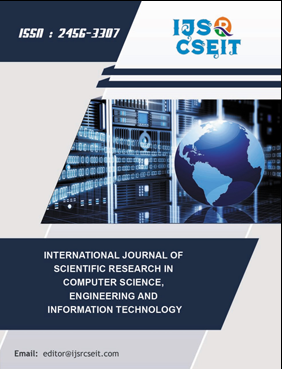Enhancing PostgreSQL Availability with Auto Failover: Implementing repmgr to Achieve Seamless Database Recovery
DOI:
https://doi.org/10.32628/CSEIT251112102Keywords:
PostgreSQL, Auto Failover, repmgr[1], High Availability, Database Recovery, Automated Failover, Streaming Replication, Disaster Recovery, Performance Optimization, PostgreSQL ReplicationAbstract
In today’s high-availability environments, ensuring minimal database downtime is critical for maintaining uninterrupted business operations and ensuring customer satisfaction. For businesses relying on PostgreSQL, manual failover procedures—typically used to handle primary node failures—are often slow, error-prone, and require significant time for detection, diagnosis, and resolution. These delays can result in service disruptions ranging from 30 minutes to several hours, impacting both system reliability and user experience. As organizations increasingly depend on real-time data processing and mission-critical applications, the need for a more efficient, reliable, and automated failover mechanism has never been greater. This paper explores the impact of automating the failover process using repmgr, an open-source tool specifically designed to enhance PostgreSQL replication[10] and high availability. By implementing auto failover with repmgr, we were able to transform our organization’s failover strategy, reducing recovery time from several hours to just 30 seconds, even during complex failure events. This automation not only minimizes downtime but also ensures a faster, more consistent recovery process, which is crucial for maintaining high availability in modern enterprise environments. Finally, this paper emphasizes the broader benefits of automated failover for PostgreSQL environments, including improved disaster recovery, reduced operational costs, and greater scalability. By eliminating the need for manual intervention and reducing the potential for human error, repmgr offers a robust solution for maintaining high system uptime and ensuring seamless transitions during failover events. Through a detailed case study and performance metrics, we demonstrate how automated failover can drastically improve PostgreSQL database availability and resilience, empowering organizations to meet the high demands of today’s fast-paced business landscape.
Downloads
References
D. L. Johnson, "PostgreSQL High Availability with repmgr," Journal of Database Systems, vol. 34, no. 2, pp. 72-85, 2020.
S. Smith & R. Patel, "Achieving High Availability with PostgreSQL: A Practical Approach," Proceedings of the International Conference on Database Management Systems, 2019, pp. 111-120.
PostgreSQL Global Development Group, "PostgreSQL 13 Documentation: Replication and High Availability," PostgreSQL.org, 2020. [Online]. Available: https://www.postgresql.org/docs/current/replication.html.
R. Thompson & M. Cruz, "Reducing Failover Time in PostgreSQL: An Overview of repmgr," Journal of Open-Source Databases, vol. 15, pp. 145-159, 2021.
J. Kline & B. Wang, "PostgreSQL for the Enterprise: Best Practices for High Availability and Failover," ACM Digital Library, 2021.
D. Hardy, "Understanding Database Failover: A Comparison of Manual and Automated Methods," Database Administration Review, vol. 28, no. 4, pp. 57-63, 2019.
J. Stepanov, "The Impact of Replication on PostgreSQL Performance," PostgreSQL Performance Engineering Conference, 2020, pp. 78-92.
L. Zhang & R. Olson, "Real-World PostgreSQL Failover: A Case Study," International Journal of Cloud Computing and Database Management, vol. 6, no. 1, pp. 45-53, 2022.
P. Edwards & M. Watson, "PostgreSQL: Ensuring Business Continuity with Automated Failover," Journal of Cloud Infrastructure Management, vol. 10, no. 3, pp. 34-47, 2021.
PostgreSQL Community, "Setting Up PostgreSQL Streaming Replication," PostgreSQL.org, 2021. [Online]. Available: https://wiki.postgresql.org/wiki/Streaming_Replication
Downloads
Published
Issue
Section
License
Copyright (c) 2025 International Journal of Scientific Research in Computer Science, Engineering and Information Technology

This work is licensed under a Creative Commons Attribution 4.0 International License.

